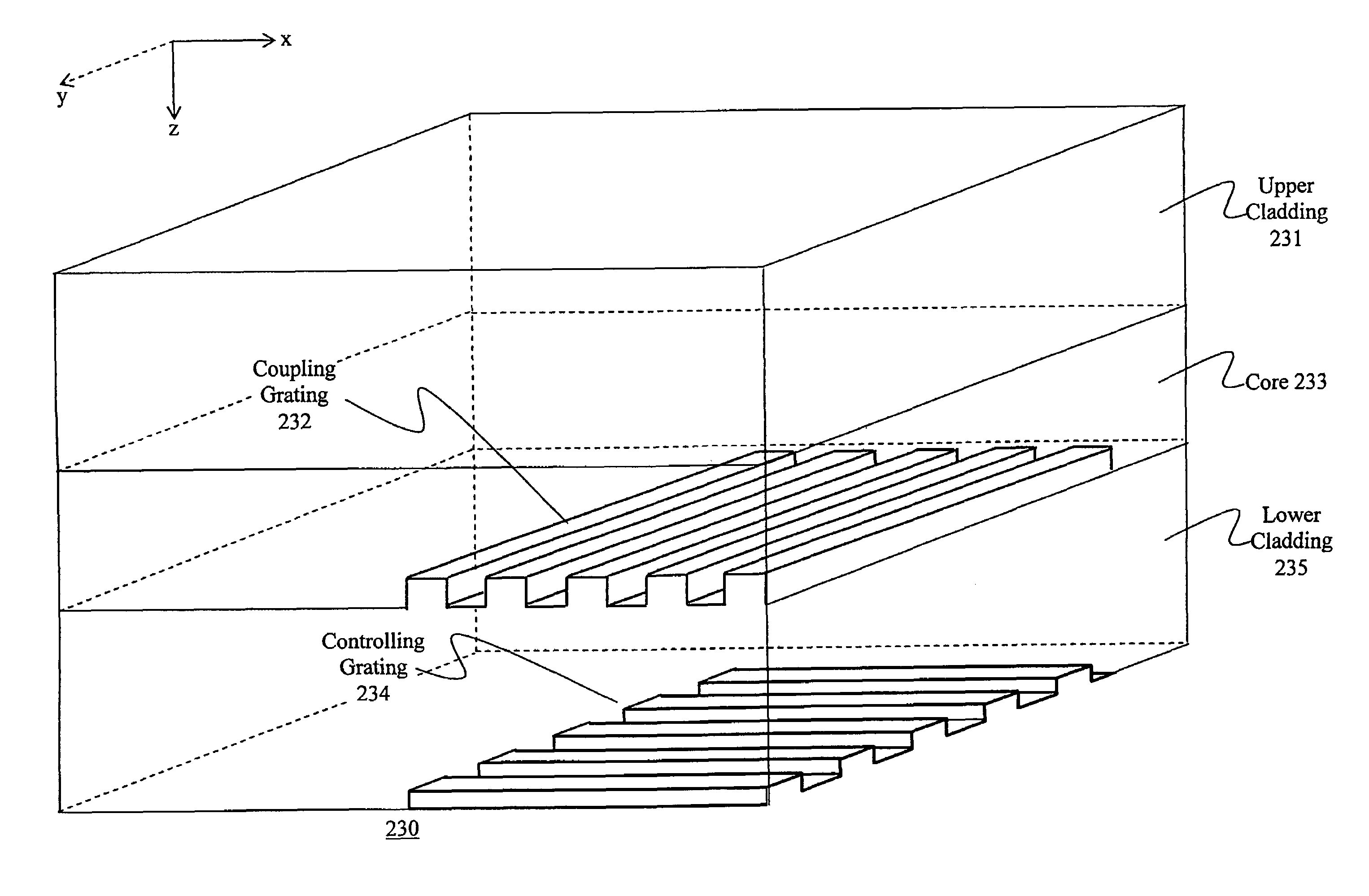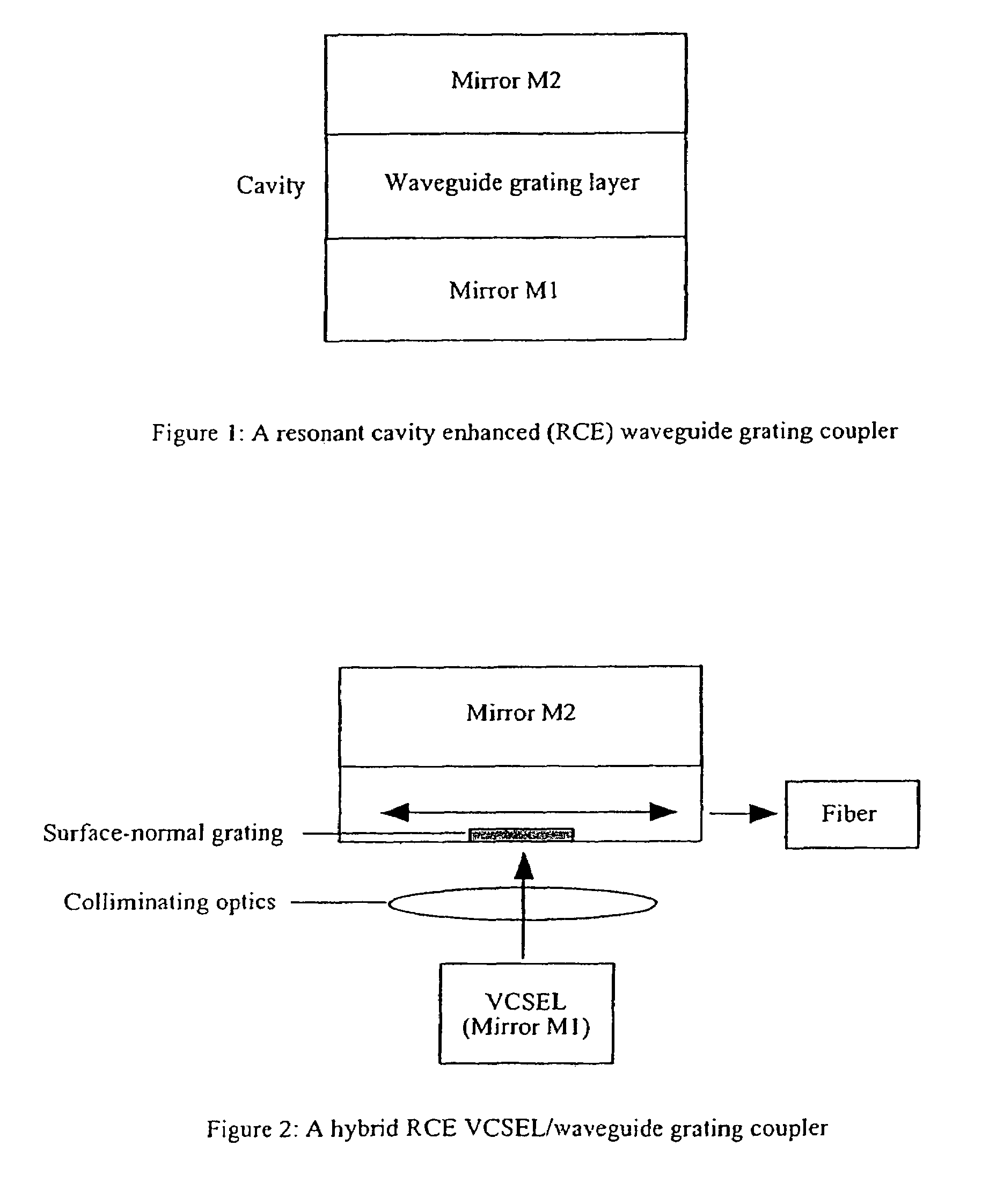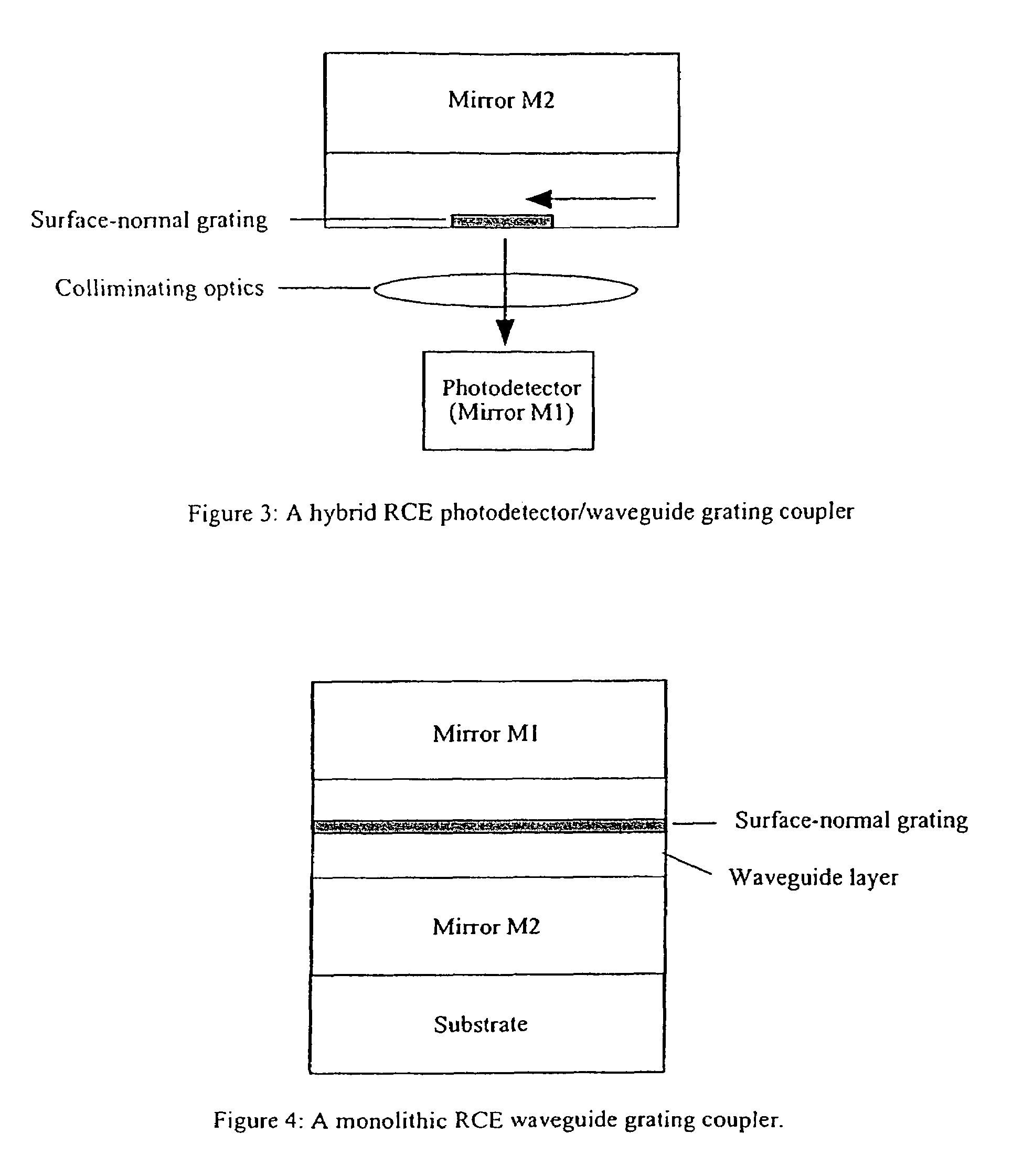Polarization control using diffraction gratings in VCSEL waveguide grating couplers
a technology of vcsel waveguide and diffraction grating, which is applied in the field of coupling light, can solve the problems of imposing restrictions on the array architecture, affecting the beam quality of high power, and the frequency (or wavelength) of light from each vcsel is slightly different and therefore uncorrelated, so as to improve the first polarization mode
- Summary
- Abstract
- Description
- Claims
- Application Information
AI Technical Summary
Benefits of technology
Problems solved by technology
Method used
Image
Examples
Embodiment Construction
[0096]A resonant cavity enhanced (RCE) waveguide grating coupler includes a surface-normal waveguide grating inserted into a Fabry-Perot cavity (FIG. 1). The Fabry-Perot cavity has two mirrors and, between them, a cavity which contains a waveguide grating layer. The mirror can be either a semiconductor layer, a semiconductor distributed bragg reflector (DBR) or a dielectric DBR. Semiconductor DBR mirrors can be a part of an optoelectronic device, particularly a vertical cavity surface emitting laser (VCSEL) or a photodetector. The thickness of the cavity should be designed in such a way that a phase matching condition is satisfied, for resonance. Light can be coupled into / out of an optical fiber through the surface-normal waveguide grating. A coupling efficiency into the waveguide layer can be greatly enhanced due to the large increase of the resonant optical field introduced by the Fabry-Perot cavity. Two approaches can be used to realize the RCE waveguide grating coupler: hybrid a...
PUM
 Login to View More
Login to View More Abstract
Description
Claims
Application Information
 Login to View More
Login to View More - R&D
- Intellectual Property
- Life Sciences
- Materials
- Tech Scout
- Unparalleled Data Quality
- Higher Quality Content
- 60% Fewer Hallucinations
Browse by: Latest US Patents, China's latest patents, Technical Efficacy Thesaurus, Application Domain, Technology Topic, Popular Technical Reports.
© 2025 PatSnap. All rights reserved.Legal|Privacy policy|Modern Slavery Act Transparency Statement|Sitemap|About US| Contact US: help@patsnap.com



